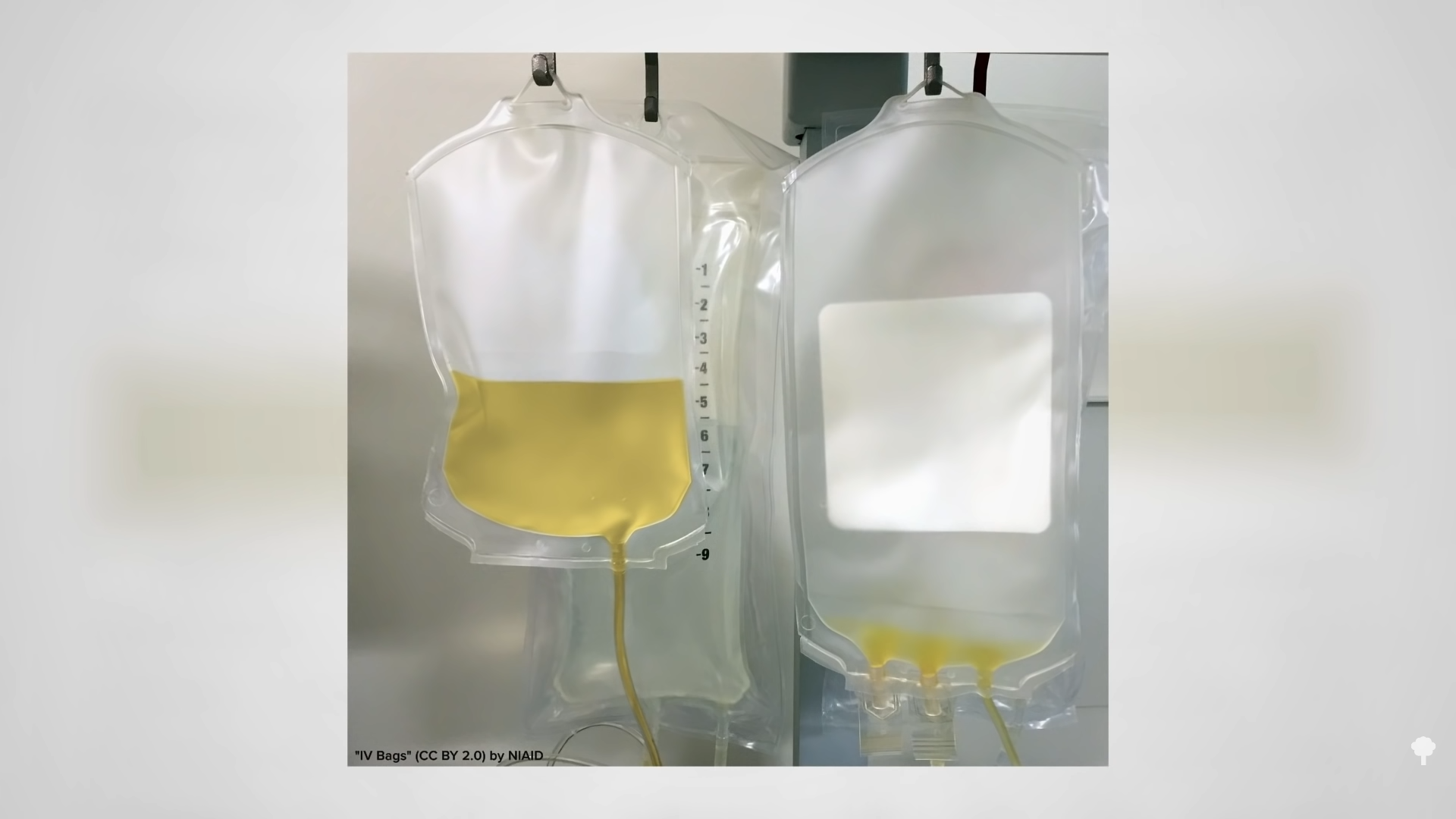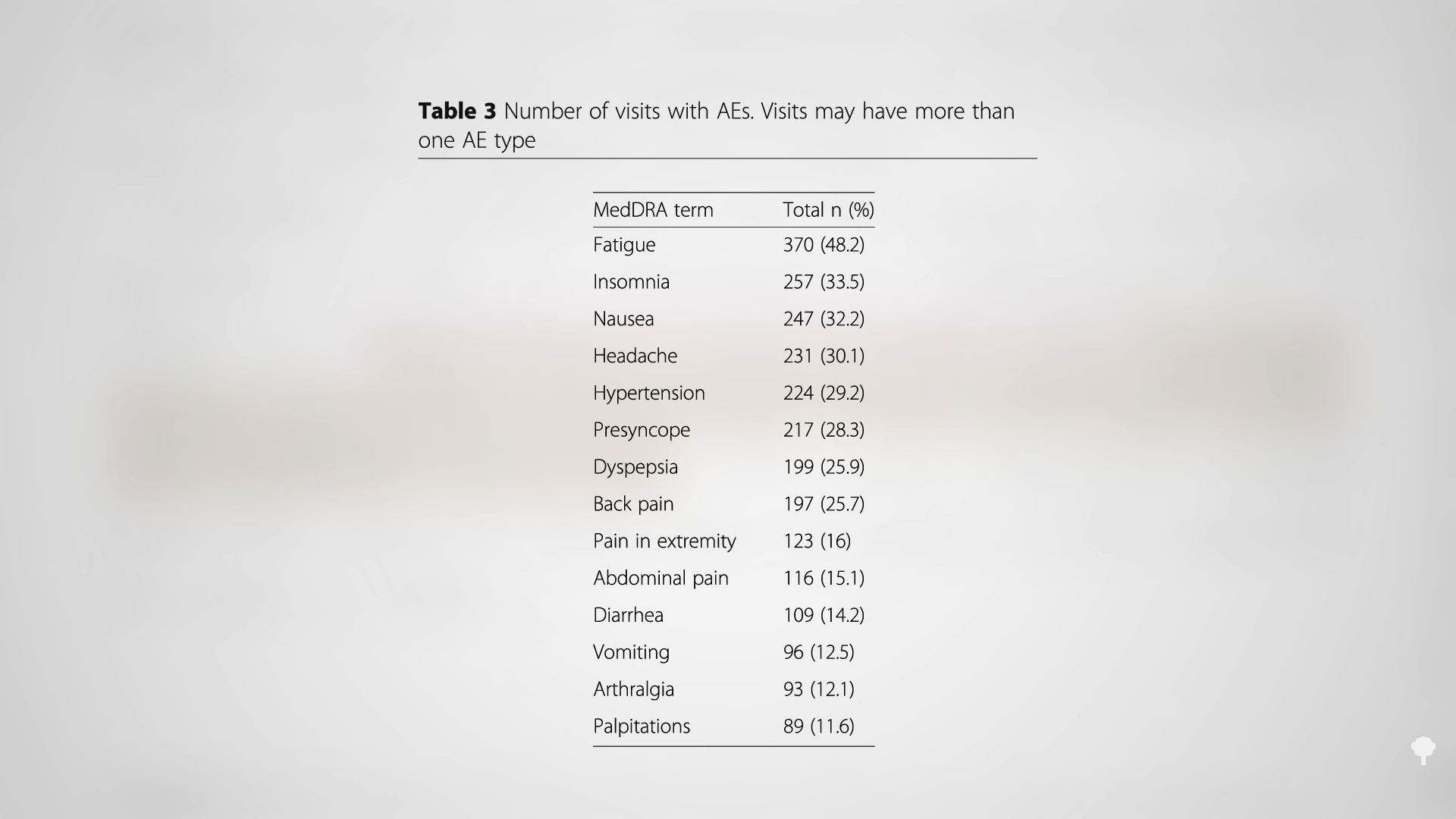
Why should fasts of more than 24 hours and, in particular, three or more days be done only under the supervision of a health professional and preferably in a residential clinic?
In fact, fasting for a week or two can interfere with loss of body fat, as shown at the beginning of my video Is it safe to fast to lose weight?. But finally, after the third week of fasting, the fat loss begin to overcome the loss of lean body mass in obese people, as seen in the graph below and at 0:14 in my video. Is it safe to go that long without eating? 
Its proponents talk about fasting as a cleansing process, but part of what is removed from our body are essential vitamins and minerals. People who weigh enough can fast Up to 382 days without calories, but no one can go even a fraction of that time without vitamins. Scurvy, for example, can be diagnosed in just four weeks without vitamin C. Beriberi, thiamine (vitamin B1) deficiency, can begin even earlier in fasting patients. And, once manifestscan lead to brain damage within days, which can eventually become irreversible.
Although fasting patients report problems like nausea and indigestion after taking supplements, all of the months-long fasting cases I have discussed above received daily multivitamins and mineral supplements as needed. Without supplements, hunger strikers and those going by prolonged fasts for therapeutic or religious purposes (like the Baptist minister who hoped to “do improve their spiritual powers for exorcism”) have term even paralyzed, become comatose or worse.
Nutrient deficiencies are not the only risk. After reading Despite all the successful reports of massive weight loss through prolonged fasting in the medical literature, one doctor decided to try it with his patients. Of the first dozen who tried it, two died. In retrospect, the two patients who died had started with heart failure and had been taking diuretics. The fast itself produces pronounced diuresis, that is, loss of water and electrolytes through urine, so it was the combination of fasting on top of the water pills that likely depleted his potassium and triggered his fatal heart rhythms. The doctor did everything possible to spot He noted that the two people who died began “with severe heart failure, complicated by severe obesity; but both had improved greatly while undergoing starvation therapy.” That seems like little consolation since they both died within weeks.
Not all deaths due to therapeutic fasting were complicated due to the simultaneous use of medications. One researcher writes: “At first he did very well and experienced the usual euphoria…His pulse, blood pressure, and electrolytes remained satisfactory, but halfway through the third week of treatment, he suddenly collapsed and died. This line of treatment is certainly tempting because it produces weight loss and the patient feels much better, but the report of fatal cases” (the whole part about killing people) “must make it a very suspect line of treatment.”
Contrary to the popular idea that the heart muscle is especially saved During fasting, the heart appears to undergo similar muscle atrophy. This was “described on victims of the Warsaw Ghetto” during World War II in a remarkable series of detailed studies conducted by ghetto doctors before they themselves succumbed. In a case titled “Severe Cardiac Fiber Fragmentation After Therapeutic Starvation for Obesity,” a 20-year-old woman achieved “accomplished your ideal weight” after losing 128 pounds fasting for 30 weeks. “After eating an egg for breakfast,” she suffered a heart attack and died. In the autopsy, as you can see below and at minute 3:44 of my videothe muscle fibers of your heart presented evidence of widespread disintegration. The pathologists suggested that fasting regimens “should no longer be recommended as a safe means of weight reduction.”  Rip fasting seems to be the most dangerous part. After World War II, one in five starving Japanese prisoners of war suffered tragically. deceased following release. Now acquaintance As “refeeding syndrome,” multiorgan system failure can result from resuming a regular diet too quickly. This is because there are critical nutrients like thiamine and phosphorus that are used to metabolize food. Therefore, in the critical refeeding period, if too much food is eaten before these nutrients can be replenished, demand may increase. get over supply. Any residue you still have can be reduced further, with potentially fatal consequences. This is why rescue workers are taught Always give thiamine before meals to victims who have been trapped or unable to eat. Thiamine is responsible for the yellow color of “banana bags,” a term you may have heard in medical dramas to describe an intravenous fluid concoction often given to malnourished alcoholics to prevent a similar reaction. (You can see a photo of them below and at 4:53 in my video.) Anyone “with negligible food intake for more than five days” may be at risk of developing feedback problems.
Rip fasting seems to be the most dangerous part. After World War II, one in five starving Japanese prisoners of war suffered tragically. deceased following release. Now acquaintance As “refeeding syndrome,” multiorgan system failure can result from resuming a regular diet too quickly. This is because there are critical nutrients like thiamine and phosphorus that are used to metabolize food. Therefore, in the critical refeeding period, if too much food is eaten before these nutrients can be replenished, demand may increase. get over supply. Any residue you still have can be reduced further, with potentially fatal consequences. This is why rescue workers are taught Always give thiamine before meals to victims who have been trapped or unable to eat. Thiamine is responsible for the yellow color of “banana bags,” a term you may have heard in medical dramas to describe an intravenous fluid concoction often given to malnourished alcoholics to prevent a similar reaction. (You can see a photo of them below and at 4:53 in my video.) Anyone “with negligible food intake for more than five days” may be at risk of developing feedback problems.  Fasting under medical supervision has achieved Much safer now that proper feedback protocols are in place. We now know what warning signs to look for and who should not fast in the first place, such as those who have advanced liver or kidney failure, porphyria, uncontrolled hyperthyroidism, and pregnant and lactating women. The most comprehensive safety analysis of physician-supervised water-only fasting was recently performed. published by TrueNorth Health Center in California. Of the 768 visits to your facilities for fasts of up to 41 days, were there any adverse events? There were 5,961 of them! Most of them were mild, known reactions to fasting, such as fatigue, nausea, insomnia, headache, dizziness, upset stomach, and back pain. Only two serious events and no fatalities were reported. You can see the graph below and at 5:58 in my video.
Fasting under medical supervision has achieved Much safer now that proper feedback protocols are in place. We now know what warning signs to look for and who should not fast in the first place, such as those who have advanced liver or kidney failure, porphyria, uncontrolled hyperthyroidism, and pregnant and lactating women. The most comprehensive safety analysis of physician-supervised water-only fasting was recently performed. published by TrueNorth Health Center in California. Of the 768 visits to your facilities for fasts of up to 41 days, were there any adverse events? There were 5,961 of them! Most of them were mild, known reactions to fasting, such as fatigue, nausea, insomnia, headache, dizziness, upset stomach, and back pain. Only two serious events and no fatalities were reported. You can see the graph below and at 5:58 in my video.  “Fast Periods lasting more than 24 hours, and particularly those lasting 3 or more days, should be performed under the supervision of a doctor and preferably in a [live-in] clinic.” In other words, don’t try this at home! This isn’t just legalistic mumbo-jumbo. For example, typically, your kidneys diving in sodium conservation mode during fasting, but if that response fails, you could quickly develop an electrolyte abnormality that may only manifest with nonspecific symptoms, such as fatigue or dizziness, that could be easily dismissed until it’s too late.
“Fast Periods lasting more than 24 hours, and particularly those lasting 3 or more days, should be performed under the supervision of a doctor and preferably in a [live-in] clinic.” In other words, don’t try this at home! This isn’t just legalistic mumbo-jumbo. For example, typically, your kidneys diving in sodium conservation mode during fasting, but if that response fails, you could quickly develop an electrolyte abnormality that may only manifest with nonspecific symptoms, such as fatigue or dizziness, that could be easily dismissed until it’s too late.
The risks of any therapy should be based on the severity of the disease. The consequences of obesity are considered so serious that effective therapies could have “considerable acceptable toxicity.” For example, many consider major surgery for obesity to be a justifiable risk, but the key word is effective.
Therapeutic fasting for obesity has largely been abandoned by the medical community not only because of its uncertain safety profile but also because of its questionable short- and long-term effectiveness. Remember, for a fast that only lasts a week or two, you may be able to lose as much or even more body fat on a low-calorie diet than on a no-calorie diet.
In fact, fasting for a week or two can interfere with losing body fat. For more information on this, see Is fasting beneficial for weight loss? and Benefits of fasting for weight loss put to the test.
If you’re wondering what the best way to lose weight is, I wrote an entire book about it! Verify How not to diet.
Interested in learning more about fasting? Watch related videos below.







